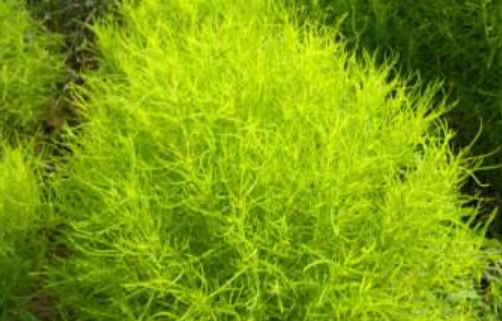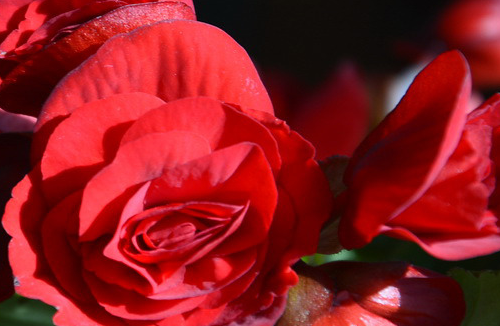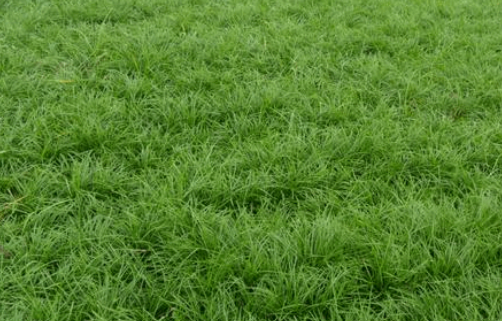Matters needing attention in the cultivation of skin
Weeds
In the process of its growth, if it is not dealt with in time, there will certainly be a lot of weeds around the plant. At this time, we need to clean up the weeds around the plant. We can use artificial weeding, machine weeding, chemical weeding, or using no substitute for control and ecological control to weed, often weeding the plant, which is very conducive to the growth of the plant.

Culture methods and matters needing attention of skin
The culture method of skin, soil.
Skin does not have high requirements for soil, like loose, fertile, humus-containing sandy soil, and good drainage of sandy soil, but can also tolerate barren and thin soil, can also tolerate alkali soil.
Light and temperature
The skin likes the sunny environment, but it is also a more shade-tolerant plant.
In terms of temperature, the skin likes to be warm and is not resistant to cold. In addition, the suitable temperature for skin germination is between 10 and 20 ℃.
Water and fertilizer management
In the aspect of water and fertilizer management, the maintenance and management of land skin is still very simple and extensive. Basically, when planting, the soil needs to be fertilized with a certain amount of base fertilizer and watered once.
After planting, you need to apply fertilizer 2-3 times a year for the skin, of course, you can no longer apply fertilizer. Watering, although the skin can withstand drought, but still should add a certain amount of moisture, moisturizing the soil, the skin will grow well. Water is required to be watered every 7-10 days during the growing period. The soil is dry and wet to avoid stagnant water.
Reproduction method
The reproduction of Kochia mandshurica is generally sown and propagated, which is generally carried out in spring and sowed directly. The seeds of Kochia mandshurica are sown in April every year, and before sowing, base fertilizer is applied to keep the soil moist. Seedlings can emerge in about 10 days, and can be planted at the right time. The sowing and propagation of the skin is rapid, neat and easy to maintain.
Matters needing attention in the culture of the skin, weeds
In the growth process of the skin, it is inevitable that there will be a lot of weeds, which need to be removed. Weeding can be carried out by means of artificial control, mechanical control, chemical control, alternative control and ecological control.
Diseases and insect pests
The skin is more vulnerable to aphids and the parasitism of dodder. It needs timely prevention and control.
How to grow skin and its planting methods and matters needing attention
I believe many people understand that the whole skin is green and refreshing and spherical, which is not only cute but also gives people a sense of serenity and elegance, which is deeply loved and sought after by flower friends. But there are many flower friends said that they do not know how to grow skin, the following editor to explain in detail the skin culture technology and matters needing attention!
How to grow the skin?
1. Fixed seedling transfer: direct seeding naked on the ground when the seedling grows to 15 cm to 20 cm high, it can be combined with the harvested seedlings according to the row spacing of 70 cm to 100 cm, and the seedlings can be transferred and planted when the seedlings grow to 6 cm to 10 cm.
2. Water and fertilizer management: 150 kg / ha of instant bio-organic fertilizer should be irrigated and irrigated every 7 to 10 days during the growing period.
3. Pest control: the ground skin is vulnerable to aphids, which can be controlled by 40% dimethoate EC 1000-1200 times, and it is also easy to be parasitized by dodder, which should be removed in time after discovery.
4. Timely harvest: the seedlings can be harvested when the plant grows to 15-20 cm high, and the stems and leaves can be harvested one after another from April to July, and the whole plant or seeds can be harvested after autumn.
Planting method of ground skin
1. Soil
Skin does not have high requirements for soil, like loose, fertile, humus-containing sandy soil, and good drainage of sandy soil, but can also tolerate barren and thin soil, can also tolerate alkali soil.
2. Light and temperature
The skin likes the sunny environment, but it is also a more shade-tolerant plant.
In terms of temperature, the skin likes to be warm and is not resistant to cold. In addition, the suitable temperature for skin germination is between 10 and 20 ℃.
3. Water and fertilizer management
In the aspect of water and fertilizer management, the maintenance and management of land skin is still very simple and extensive. Basically, when planting, the soil needs to be fertilized with a certain amount of base fertilizer and watered once.
After planting, you need to apply fertilizer 2-3 times a year for the skin, of course, you can no longer apply fertilizer. Watering, although the skin can withstand drought, but still should add a certain amount of moisture, moisturizing the soil, the skin will grow well. Water is required to be watered every 7-10 days during the growing period. The soil is dry and wet to avoid stagnant water.
4. Methods of reproduction
The reproduction of Kochia mandshurica is generally sown and propagated, which is generally carried out in spring and sowed directly. The seeds of Kochia mandshurica are sown in April every year, and before sowing, base fertilizer is applied to keep the soil moist. Seedlings can emerge in about 10 days, and can be planted at the right time. The sowing and propagation of the skin is rapid, neat and easy to maintain.
Matters needing attention of the skin
1. Weeds: in the growth process of the skin, it is inevitable that there will be a lot of weeds, which need to be removed. Weeding can be carried out by means of artificial control, mechanical control, chemical control, alternative control and ecological control.
2. Diseases and insect pests: the ground skin is more vulnerable to aphids and the parasitism of dodder. It needs timely prevention and control.
Insect pests in the skin of the earth and its control
In the process of growth, the skin is not easy to produce diseases, but there are still insect pests. The skin of the ground is vulnerable to aphids. When aphids are found, they can be repelled by manual catching or biological control. In addition, 1000-1200 times 40% dimethoate EC can be used to spray insect repellent, or 500 times 10% imidacloprid wettable powder solution can be used for control.
In addition to aphids, there are also green insects, which mostly occur from the end of June to the middle of August. When it is found that there are green insects, you can get rid of the insect, or you can use insecticides, using 40% dimethoate emulsion 1000-2000 times liquid or 20% Dingkang granule 4000 times solution to control.
To sum up, the skin is not only beautiful and generous, can be used as a potted decoration room, but also has a very high edible value and medicinal value! What are you waiting for? hurry up to add a touch of green to your home and take action!
- Prev

How to raise Rieger Begonia
Soil Rieger Begonia still has certain requirements for soil. It likes loose soil with good drainage performance. We can configure this soil according to the proportion ourselves. If it is inconvenient, we can go to a special flower shop to buy it. Temperature Rieger Begonia likes warm growing conditions
- Next

How to raise Ophiopogon
The time to plant Ophiopogon japonicus is usually in sunny evenings or cloudy days, where the sun is generally not too strong. At this time, we need to plant the seedlings of Ophiopogon japonicus in the soil. It should be noted that when planting, the root of the plant should be perpendicular to the ground.
Related
- Fuxing push coffee new agricultural production and marketing class: lack of small-scale processing plants
- Jujube rice field leisure farm deep ploughing Yilan for five years to create a space for organic food and play
- Nongyu Farm-A trial of organic papaya for brave women with advanced technology
- Four points for attention in the prevention and control of diseases and insect pests of edible fungi
- How to add nutrient solution to Edible Fungi
- Is there any good way to control edible fungus mites?
- Open Inoculation Technology of Edible Fungi
- Is there any clever way to use fertilizer for edible fungus in winter?
- What agents are used to kill the pathogens of edible fungi in the mushroom shed?
- Rapid drying of Edible Fungi

